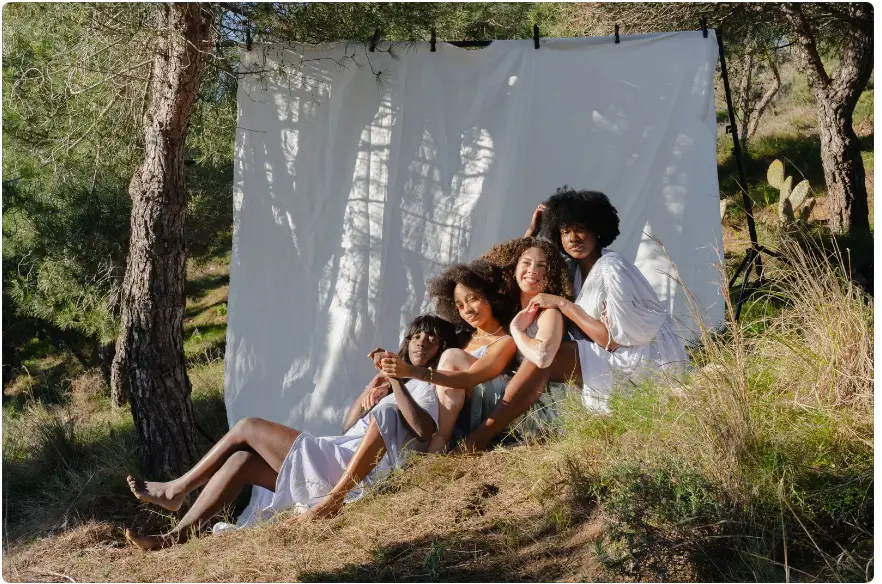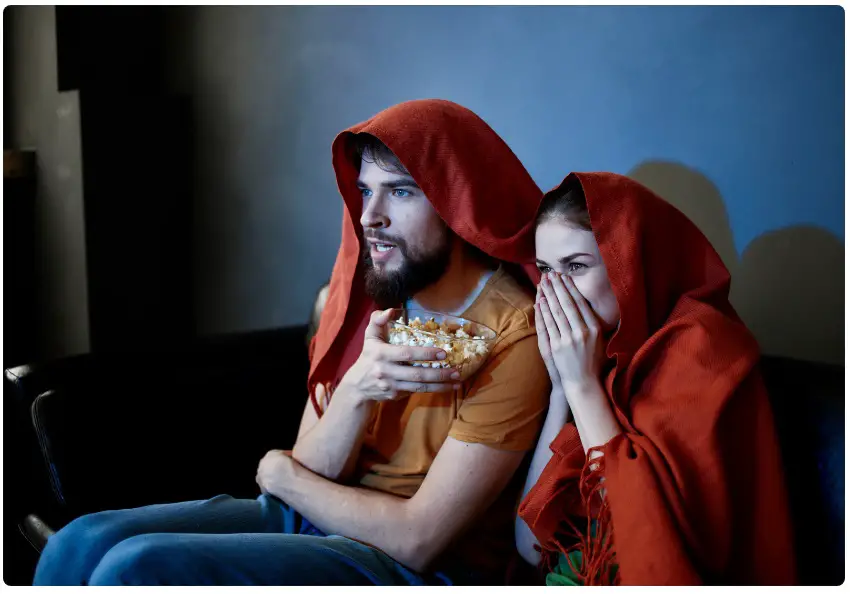Ever wondered what goes on behind the cameras of your favorite reality TV shows? The reality TV show production process is a complex and thrilling combination of creativity, problem-solving, and collaboration. In this article, we’ll uncover the secrets behind the making of these captivating, binge-worthy shows. So, strap in and get ready for a wild, behind-the-scenes journey into the world of reality TV show production!
Contents
I. A Glimpse into the Reality TV Show Production Process
A. Idea Development: Planting the Seed of Success
1. Concept Brainstorming
It all starts with an idea. The creative minds behind a reality TV show brainstorm unique and engaging concepts that will hook viewers. They often draw inspiration from current trends, popular culture, or real-life experiences. Developing a solid concept is the foundation for the reality TV show production process.
2. Identifying the Target Audience
Understanding who the show will appeal to is essential for shaping its content and style. Producers identify the target demographic and tailor the show to cater to their preferences and interests. This ensures the show will have a dedicated fan base and boosts its chances of success.
3. Market Research and Competitor Analysis
Producers conduct thorough market research to determine the viability of their concept. They analyze the competition and identify any gaps in the market that their show can fill. This step helps fine-tune the concept and ensures the show stands out from the crowd.
B. Pre-production: Building the Foundation
1. Casting Calls and Auditions
Casting is crucial in the reality TV show production process. Producers hold auditions and casting calls to find the perfect participants who will bring their concept to life. They often look for individuals with unique personalities, interesting backstories, and the ability to engage viewers.
2. Location Scouting and Securing Permits
Selecting the right locations can make or break a reality TV show. Producers scout for locations that will best suit the show’s theme and atmosphere. Once they’ve found the perfect spots, they secure permits and negotiate contracts with property owners, ensuring smooth production on-site.
3. Assembling the Production Crew
A reality TV show relies on a talented crew to bring the concept to life. Producers assemble a team of professionals, including directors, camera operators, sound technicians, editors, and more. This collaborative effort is essential to the reality TV show production process.
4. Budgeting and Scheduling
Producing a reality TV show requires careful budgeting and scheduling. Producers allocate funds to various aspects of production, such as location fees, crew salaries, and equipment rental. They also create a detailed shooting schedule to keep the production on track and ensure timely delivery of the final product.

II. Lights, Camera, Action: The Heart of the Reality TV Show Production Process
A. Filming: Capturing the Unscripted Drama
1. The Role of the Director
The director is the creative force behind the show, guiding the overall vision and style. They work closely with the camera crew, sound technicians, and participants to capture the most engaging and authentic moments, ensuring the show stays true to its concept.
2. The Importance of Camera Operators
Camera operators play a crucial role in the reality TV show production process, capturing the unscripted drama as it unfolds. They must be skilled in anticipating and reacting to the unpredictable nature of reality TV shows, ensuring they capture every essential moment. Working closely with the director, they help bring the show’s vision to life through their lens.
3. The Art of Storytelling through Editing
The raw footage captured during filming contains countless hours of material. Editors play a vital role in shaping the final product by weaving together the most compelling and engaging moments. Their storytelling expertise is essential in making sense of the chaos and turning it into a cohesive, captivating narrative.
B. Sound and Music: Setting the Mood
1. The Power of Sound Effects
Sound effects play a significant role in creating the atmosphere and setting the tone for a reality TV show. Sound technicians carefully select and create sound effects that enhance the show’s theme, amplify the drama, and keep viewers on the edge of their seats.
2. Crafting an Unforgettable Soundtrack
Music is the unsung hero of reality TV shows. Producers and composers work together to create a soundtrack that reflects the show’s mood and complements its narrative. A well-curated soundtrack can evoke strong emotions in viewers and make the show even more memorable.
C. Special Effects and Graphics: A Touch of Magic
1. Enhancing the Visuals
While reality TV shows primarily rely on raw, unscripted footage, special effects can enhance the overall viewing experience. Visual effects artists work their magic, adding flair and polish to the footage, making it more visually appealing and engaging.
2. The Impact of Graphics and Animations
Graphics and animations play an essential role in the reality TV show production process. They help convey information, create visual interest, and add a touch of personality to the show. From title sequences to on-screen graphics, these elements contribute to the show’s unique identity and style.

III. Post-production: Perfecting the Final Product
A. Editing: Crafting a Seamless Story
1. The Role of the Editor
The editor is responsible for taking the raw footage and transforming it into a polished, cohesive narrative. They collaborate closely with the director and producers, selecting the most engaging moments and arranging them in a way that tells a compelling story. Their keen eye for detail and storytelling expertise are invaluable in the reality TV show production process.
2. Combining Footage and Sound
Merging visuals and sound is a delicate art. Editors synchronize the video footage with sound effects, music, and dialogue to create a seamless and immersive viewing experience. This process involves careful timing and attention to detail, ensuring that every element works together in harmony.
3. Cutting out the Fluff
In reality TV shows, not every moment captured on camera makes the final cut. Editors must decide which scenes to include and which to leave on the cutting room floor. By eliminating unnecessary or dull footage, they help maintain the show’s pacing and keep viewers engaged from start to finish.
B. Color Grading and Visual Effects: Painting the Picture
1. Setting the Tone through Color
Color grading is an essential step in the post-production process, allowing editors to manipulate the colors and tones in the footage to achieve a desired mood or atmosphere. By adjusting the brightness, contrast, and saturation, they can transform the visuals and create a more impactful viewing experience.
2. Enhancing Visuals with VFX
Visual effects (VFX) artists work closely with the post-production team to add polish and finesse to the footage. They may remove unwanted elements, create seamless transitions, or add special effects to elevate the show’s visual appeal and keep viewers glued to their screens.
C. Finalizing the Masterpiece
1. Sound Mixing and Mastering
Once the visuals and sound elements are in place, sound mixers and mastering engineers work together to balance and fine-tune the audio levels. They ensure that dialogue, sound effects, and music are mixed seamlessly, creating a cohesive and immersive soundscape that complements the visuals.
2. Quality Control and Final Tweaks
Before the show is ready for broadcast, the final product goes through a rigorous quality control process. The production team meticulously reviews the footage, checking for any errors or inconsistencies. If necessary, they make final tweaks and adjustments to ensure the show is polished and ready for viewers.
FAQs:
Q: How long does the reality TV show production process take?
A: The duration of the reality TV show production process varies depending on the complexity of the show, the number of episodes, and the logistics involved. On average, it can take anywhere from a few months to over a year, from the initial concept development to the final product. This timeline includes pre-production, production, and post-production stages.
Q: What’s the difference between pre-production, production, and post-production?
A: Pre-production involves all the preparatory work needed before filming begins, such as concept development, casting, location scouting, assembling the crew, and budgeting. Production is the actual filming stage, where the crew captures the footage, and the director guides the overall vision and style. Post-production is the process of refining the raw footage, including editing, color grading, sound mixing, and visual effects, to create the final product.
Q: How do reality TV show producers ensure participant safety and privacy?
A: Producers prioritize participant safety and privacy by implementing strict guidelines and protocols. They often conduct thorough background checks, provide safety training, and ensure that proper safety measures are in place during filming. Privacy concerns are addressed through carefully crafted contracts, which outline the rights and responsibilities of the participants, as well as the use and disclosure of personal information.
Q: How much of a reality TV show is scripted or staged?
A: The level of scripting or staging in a reality TV show varies depending on the show’s format and concept. Some shows have a higher degree of scripting, where producers create specific scenarios or provide participants with lines to ensure engaging content. Other shows rely on genuine, unscripted interactions between participants. However, most reality TV shows involve a mix of both scripted and unscripted content, with producers and editors shaping the narrative in post-production.
Q: How do reality TV shows deal with legal and ethical issues?
A: Reality TV shows address legal and ethical issues through a combination of contracts, guidelines, and compliance with relevant laws and regulations. Participants often sign contracts outlining their rights, responsibilities, and the consequences of violating the agreement. Producers work closely with legal teams to ensure compliance with applicable laws, including labor laws, intellectual property rights, and privacy regulations. Additionally, ethical guidelines are established to maintain a respectful and responsible production environment.
Conclusion:
And there you have it! The reality TV show production process is a fascinating and intricate journey, with countless creative and technical professionals working tirelessly behind the scenes to create unforgettable experiences for viewers. Now that you’ve had an in-depth look at the making of these captivating shows, you’ll have a newfound appreciation for the effort that goes into crafting your favorite reality TV programs. So, next time you’re engrossed in the latest drama unfolding on your screen, remember the magic happening behind the scenes and enjoy the ride!





One response to “The Ins and Outs of Reality TV Show Production Process”
[…] https://castingmaster.com/reality-tv-show-production-process/ […]